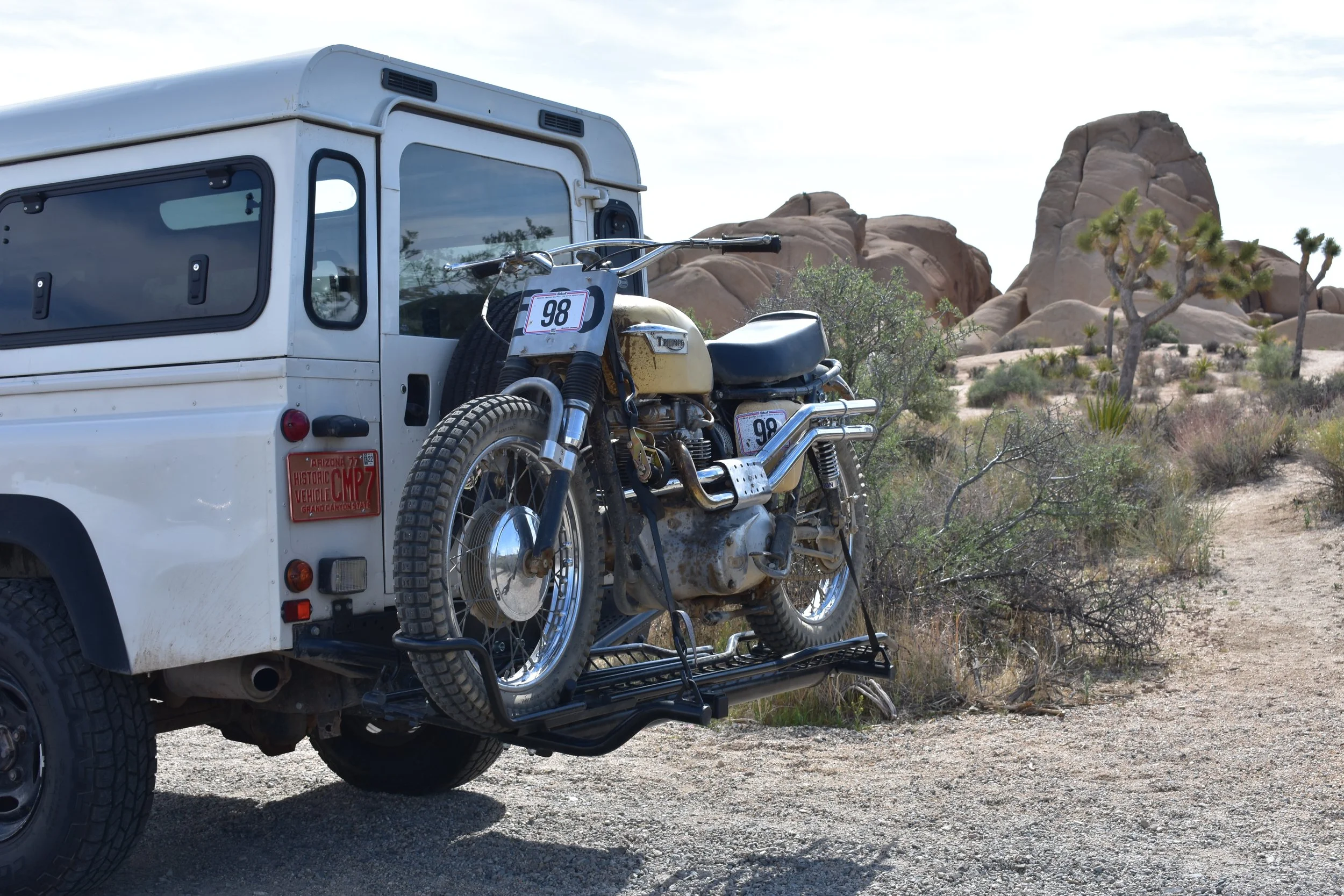Vintage Triumph Motorcycle Fork Braces
This started as a personal project but quickly became a successful product, especially considering the niche target audience - folks interested in racing their vintage Triumph motorcycle offroad, or at least making it look the part.
I was building my next vintage Triumph with the intent to use it in vintage offroad racing events, so I was researching the old 60’s and 70’s District 37 race bikes for inspiration. These bikes were not designed with the ruggedness of desert racing in mind, so racers had to heavily modify these machines. Hayden Roberts of Hello Engine had been resurrecting some original bikes in as-raced condition, one of which featured a pretty unique fork brace. I wanted one - so I set off to engineer my own.
(Photos from Bike Exif, by Jesse Carmody)
The overall shape of the clamp pieces is relatively simple and I left it much the same, just with the addition of counterbores for the socket head cap screws and geometry such that one clamp design would work on either fork leg. The main engineering challenges were centered around the split clamp geometry, fit (tolerances, tire clearance) and manufacturing feasibility for my desired price point.
I opted to mill the clamps from 6061-T6 aluminum and evaluated both mild steel and 304 stainless steel tubing for the brace. I ran strength simulations for both and opted for stainless for the inherent corrosion resistance without having to coat or plate the tubes. Mandel bending ensures a consistent sweeping cross section across the bend (you can see some necking of the tube in the photos above - I wanted to eliminate this).
The same fork legs were used across various vintage Triumph models from 1963-1970. Since tolerance ranges for the OD of these fork legs is unpublished I had to opt for empirically derived tolerances from examples in my own parts bin, other locals and crowd sourcing extra measurement data online. Understanding the tolerances for these parts was a crucial step for ensuring I could produce them at scale and achieve the correct fit between the fork leg and brace tubing with a single split clamp interface.
I also designed the packaging, installation instructions and handle the fabrication and shipping for each order. The design has worked excellent on my personal bike and it’s been rewarding to see the interest in these from other enthusiasts. They’ve been fitted to successful race bikes in competition and featured in various print and online articles and advertisements.











